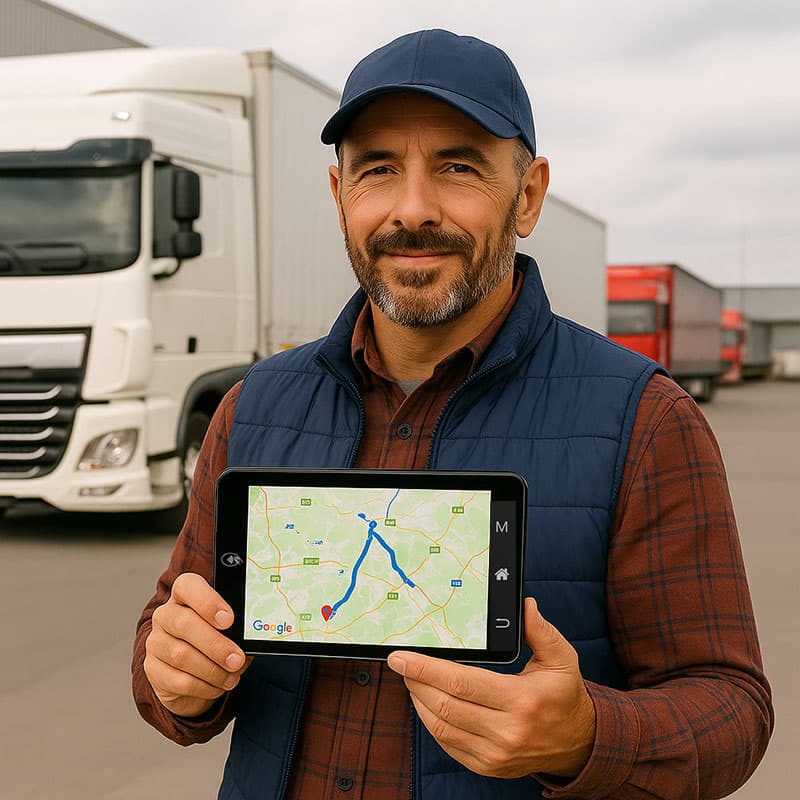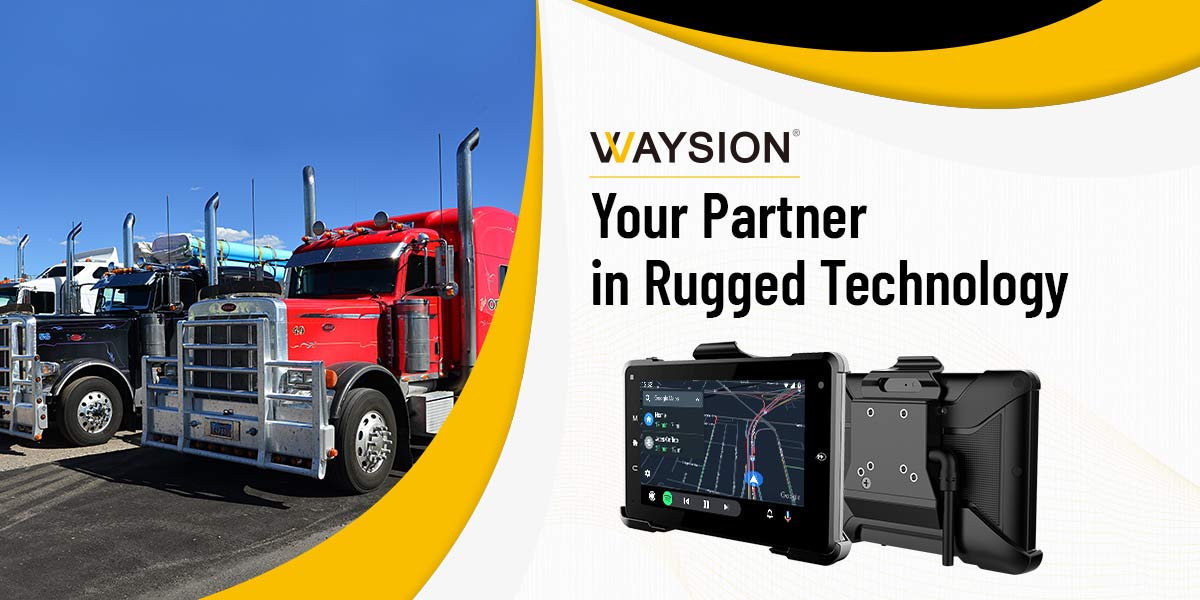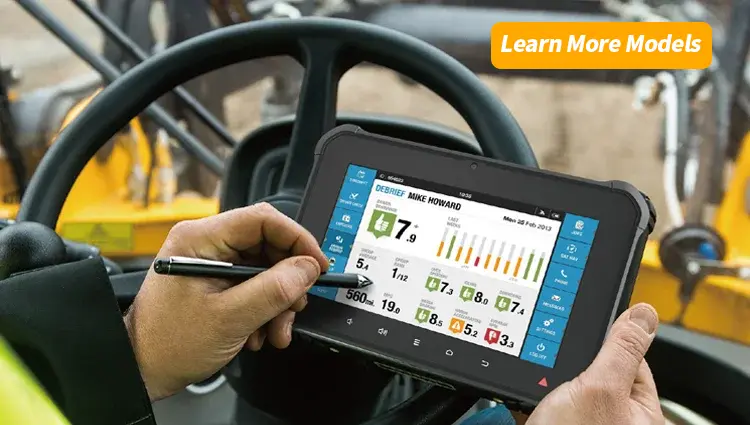The Ultimate Guide to In-Vehicle Computers for Fleet, Public Transit, and Autonomous Applications
- What Is an In-Vehicle Computer?
- 1. Tacton TC401 – Industrial All-in-One Panel PC for Harsh Environments
- 2. SINTRONES In-Vehicle Computers – Smart Solutions for Autonomous & Connected Vehicles
- 3. Acrosser In-Vehicle Computers – Built for Versatile Vehicle Applications
- Why In-Vehicle Computers Matter
- Choosing the Right In-Vehicle Computer: Key Considerations
- Final Thoughts
- Frequently Asked Questions (FAQs)
In the era of intelligent transportation and autonomous driving, in-vehicle computers have emerged as the backbone of modern vehicle technology. Designed to operate reliably under harsh conditions, these embedded systems integrate computing power, real-time communication, and smart interfaces to support various vehicular applications — from fleet management and surveillance to infotainment and AI-driven automation.

This article explores the top solutions from leading brands like Tacton, SINTRONES, Waysion,and Acrosser, highlighting their capabilities and how they address the evolving needs of mobile computing environments.
What Is an In-Vehicle Computer?
An in-vehicle computer is a rugged computing platform installed in vehicles to perform a wide range of tasks, including navigation, diagnostics, data logging, communication, and AI inference. Unlike consumer-grade PCs, these systems are engineered to withstand extreme temperatures, shock, vibration, humidity, and power fluctuations — making them ideal for use in fleets, buses, taxis, emergency vehicles, and even autonomous cars.
1. Tacton TC401 – Industrial All-in-One Panel PC for Harsh Environments
The Tacton TC401 sets a new standard for industrial-grade in-vehicle computing. Built around Intel’s 12th Gen processors, it delivers powerful performance tailored for high-load applications in demanding conditions.
🔑 Key Features:
- Powerful Intel 12th Gen CPU – Enhanced processing for real-time analytics and complex tasks.
- High-Brightness Display Options – Available in standard or sunlight-readable configurations with optical bonding.
- IP66/69K Protection – Completely sealed against dust, high-pressure water jets, and temperature extremes.
- Flexible I/O Expansion – Up to 6 LAN ports, 8 USB ports (some lockable), and 4 COM ports for seamless peripheral integration.
Ideal For: Mining vehicles, public buses, construction fleets, and environments requiring fanless durability and rich connectivity.
2. SINTRONES In-Vehicle Computers – Smart Solutions for Autonomous & Connected Vehicles
SINTRONES offers a suite of high-performance in-vehicle computers optimized for autonomous driving, telematics, and fleet operations. With a focus on intelligent mobility, SINTRONES systems support diverse sensors and communication protocols to power tomorrow’s smart vehicles.
🔧 Key Features:
- All-in-One Vehicle Solution – Supports driver behavior monitoring, ADAS, and autonomous driving capabilities.
- Highly Adaptable I/O – Integrates with GPS, CAN bus, LTE/5G, cameras, and more.
- User-Friendly Interface – Intuitive OS and tools ensure easy deployment and fleet management.
- Real-Time Monitoring – Enables precise tracking of both hardware and software states across vehicle fleets.
Best Suited For: Autonomous vehicles, smart public transportation systems, and fleet service optimization.
3. Acrosser In-Vehicle Computers – Built for Versatile Vehicle Applications
Acrosser delivers ruggedized vehicle computing systems designed for maximum flexibility and compliance with international standards. These computers excel in entertainment, fleet control, video surveillance, and AI edge processing, providing a seamless experience across many vehicle types.
🚗 Key Features:
- Multiple Use Cases – Entertainment systems, fleet tracking, security monitoring, and AI.
- Intel® Core™ and Atom™ CPUs – Tailored for scalable computing needs across industries.
- Certified for Vehicle Standards – Meets ISO 7637-2 and E-Mark certifications.
- Integrated Connectivity – GPS, Wi-Fi, CAN Bus, and LTE for real-time data handling.
- Wide Deployment – Used in taxis, police cars, ambulances, and more.
Perfect Fit For: Emergency vehicles, ride-hailing fleets, and intelligent transport systems requiring stable, multi-role performance.

【Waysion in vehicle computer Q777】
Why In-Vehicle Computers Matter
As industries embrace digital transformation and mobility-as-a-service (MaaS) grows, in-vehicle computers are no longer optional. They enable:
- Improved Operational Efficiency – Real-time diagnostics and predictive maintenance reduce downtime.
- Enhanced Safety – ADAS and surveillance integration support safer road behavior.
- Seamless Connectivity – Ensures communication between onboard systems, drivers, and control centers.
- Edge AI Deployment – Facilitates fast, local decision-making without relying on the cloud.
Choosing the Right In-Vehicle Computer: Key Considerations
When selecting a rugged computer for vehicle deployment, look for:
| Criteria | Why It Matters |
|---|---|
| Processing Power | Needed for real-time analytics, ADAS, and multimedia. |
| I/O Flexibility | Ensures compatibility with sensors, networks, and peripherals. |
| Environmental Durability | Must withstand shock, vibration, heat, and moisture. |
| Certifications | E-Mark, ISO 7637-2, and other compliance indicators for safety and legality. |
| Connectivity | Support for 5G, Wi-Fi, GPS, and CAN bus is essential. |
Final Thoughts
Whether you’re upgrading a bus fleet for real-time passenger information or building a fully autonomous vehicle, the right in-vehicle computer can make or break your system’s performance and reliability. Solutions from Tacton, SINTRONES, and Acrosser demonstrate how powerful, rugged, and flexible these platforms can be.
As the demand for connected mobility grows, investing in a high-quality in-vehicle computer is a strategic move to future-proof your transportation infrastructure.
Frequently Asked Questions (FAQs)
❓What is the purpose of an in-vehicle computer?
It provides computational power for navigation, surveillance, diagnostics, connectivity, and AI applications inside vehicles.
❓Can in-vehicle computers withstand extreme temperatures?
Yes. They are designed to operate reliably in high and low temperatures, vibration-heavy, and dusty environments.
❓Do I need certifications like E-Mark for vehicle computers?
Absolutely. Certifications ensure that the device complies with vehicle safety and electromagnetic compatibility standards.
❓Can these systems support AI and machine learning?
Yes. Many models now offer edge computing capabilities for real-time AI inference and data processing.








